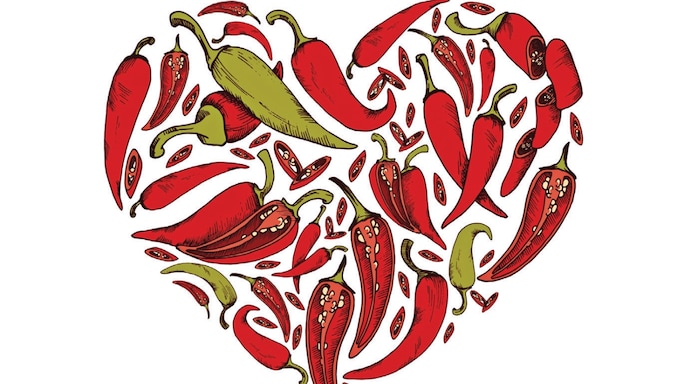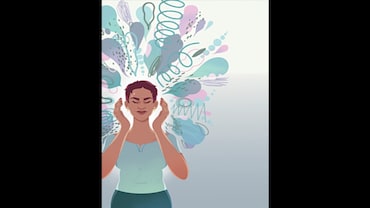- HOME
- /
- Better Living
- /
- Food
- /
The Truth about Chillis
This South American fruit can get many of us hot under the collar. Why, then, do we love it so?
 Shutterstock
Shutterstock
THE NOBEL PRIZE in Medicine, in 2021, was awarded to David Julius of the University of California, San Francisco and Ardem Patapoutian of Scripps Research Institute in La Jolla, California, for their discovery of receptors for temperature and touch. These were based on a food so ubiquitous it is difficult to imagine Indian cuisine without it. And yet, it hasn’t been with us very long. Like the tomato, the potato, the sapota and chocolate, it was a gift from the Aztecs and other Native American cultures annihilated by Europeans. As they rampaged round the globe, marauding European hordes distributed their plunder of horticultural skill among other cultures. After the Portuguese had massacred Goa (1510), they consoled us with chilli. From 1510 to 2021, chilli has had a brilliant global career, crowned by the Nobel Prize. It is a suitable moment to reconsider this burning fruit of genocide.
The Nobel was awarded for an investigation centred on chilli’s principal ingredient, capsaicin, which stings the tongue with unbearable heat. Today, the heat of chilli is culinary machismo. Chilli—fresh green, dried red, powdered, or ground down to its essence—spikes every dish like a snarl of barbed wire. Why does chilli, and specifically capsaicin, burn?
In 1997, Julius discovered a receptor for capsaicin. Soon, he found that this receptor could be activated by heat as well—so this was a receptor that transmitted the message ‘burn’ to the brain.
Patapoutian, working independently, discovered a receptor that messaged the ‘delightfully cool’ sensation of menthol to the brain. These discoveries led on to a deeper understanding of how we feel heat, cold, touch, pressure and pain.
Chilli and its capsaicin inspired this tremendous surge of perception of the tactile world. And that’s ironic because capsaicin does just the opposite: it numbs, after first sear. It stops cells from communicating, so pain signals are suppressed. You can no longer feel what’s happening—the stimulus has to be much stronger to elicit a response.In culinary terms, this translates as more! When you use chilli you also must:
- Use more oil to disseminate heat through the dish. Capsaicin is not water soluble. It takes fat to dissolve it enough to permeate the dish.
- Use more salt and more spice, to make these flavours register on the numbed tongue and palate that are so liberally coated with capsaicin.
There are capsaicin receptors lower down in the throat, food pipe, stomach and small intestine. All of them register capsaicin as pain.
Chilli’s malice bites even deeper. The burn it produces leaves no external evidence of inflammation. You’d expect your mouth, what’s left of it, to look like a battlefield after you’ve chewed a chilli—ragged and bloody, through the smoke. Not at all. A faint flush, perhaps, but no more. Chilli is the experience of injury and pain. Why then, is it so pleasurable? Capsaicin causes a brief release of endorphins, the pleasure chemicals, in the brain. Just enough to provide an instant high, and make us demand more.
Why did India embrace chilli so readily when we were so rich with pepper and ginger to perk up our cuisine? There’s an answer to that question that has been hiding in plain sight for centuries. It is some kind of poetic justice too.
When Vasco da Gama and his successors plundered us, they were plundered in turn by scurvy, the killer deficiency of vitamin C that assailed sailors on long voyages. But scurvy is common among us landlubbers too—when we don’t eat enough fresh vegetables and fruit.
Chilli is one of the richest sources of vitamin C, and it grows wild. In no time at all, our people found themselves feeling better for a bite of chilli with their gruel. It seemed to take away their aches and pains. It improved the appetite. It improved life. From the perspective of the pandemic, how should we interpret chilli’s story? We eat a lot of it—and so, by now, does the rest of the planet—for it’s ‘feel-good’ factor. This ‘high’ makes it addictive. Its vitamin C certainly shores up metabolism. The more chilli, the more fat, the more salt, the more everything. The benumbed mouth and stomach also demand more food. Chilli is the spice of excess.
Can’t do without it? Try a simple experiment: increase the amount of fruit you eat. Tomatoes and citrus, mango, kiwi, pomegranate. Do it for a week. You might soon surprise yourself wincing when you take a mouthful of your favourite fiery curry.
Try cutting back on oil. Now the injury caused by capsaicin will become more intense—and yes, you’ll find your-self holding back on chilli. Cut back on chilli and you’ll start tasting food again, soothing a lifelong burn from the mouth all the way down to the exit.
Pepper contains piperine, an alkaloid that stings—but not as much as chilli. It has the added advantage of shaking loose and accelerating the phytochemicals in vegetables when cooked with them. Even in the trace amounts achieved through the kitchen use of pepper, piperine protects the respiratory system. So those who crave the heat, but not the burn, can give this Indian treasure a try.
Excerpted With Permissions From The Book Gastronama: The Indian Guide To Eating Right By Kalpana Swaminathan And Ishrat Syed, Who Write Together As Kalpish Ratna. Published By Roli Books, 2023






